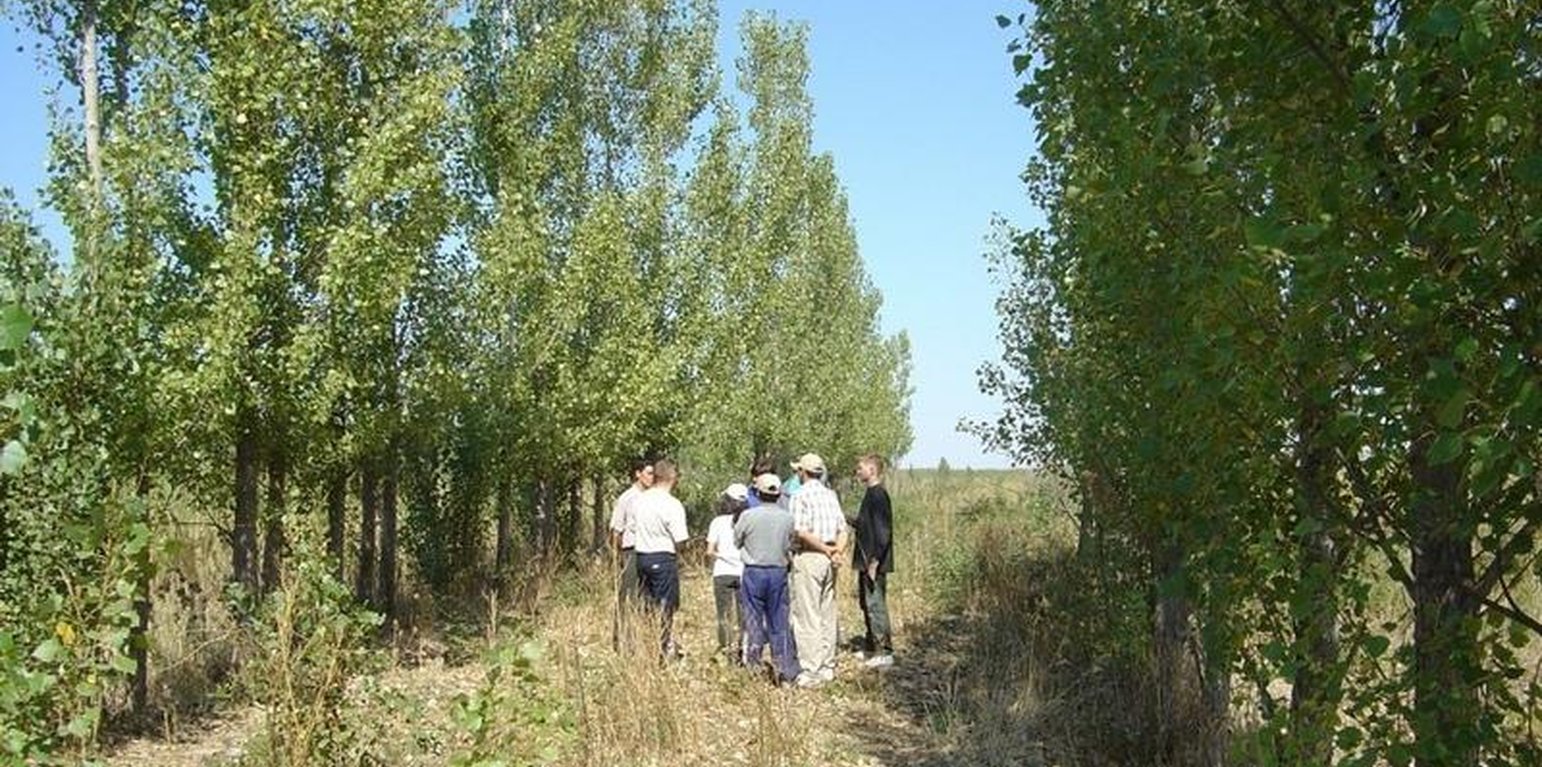



In irrigated areas of Central Asia, the drainage system introduced during soviet times has broken down due to lack of maintenance. As a result, water tables have been rising and soil salinity increasing. In the Chui Valley, which is the main crop production area in Kyrgyzstan, approximately 90% of the cultivated land is irrigated for wheat, maize, sugar beet, lucerne and vegetables. Of this, approximately one third (ca. 320,000 ha) is degraded due to loss of fertility, salinisation and waterlogging.
The individual initiative described here - poplar planting - has been applied on a degraded plain (about 400 m a.s.l.), under semi-arid conditions on a plot of 5 hectares. Though initially planted for timber, an important side effect was noted by the farmer in question. Poplar trees, well known for their tolerance to waterlogging and salinity, provide ‘bio-drainage’. Excess water is rapidly taken up by the root system and transpired through the dense foliage. Within the plantation the humidity level of the lower layers of air is increased, thus reducing the influence of the dry, hot winds. A more favourable microclimate for plant growth is thus created. Simultaneously the original purpose of planting - to obtain cheap timber and firewood - is achieved through the rapid growth of the trees: there is a severe shortage of wood locally.
The varieties used include the local Populus alba and Populus nigra as well as a hybrid from Kazakhstan, P. pyramidalis. The trees are planted in rows about 5 metres wide, separated by 10-15 metre strips planted with Medicago sativa (lucerne) and Bromus inermis (a grass), both of which are grown for hay (see technical drawing). Around 3,000 saplings are needed per hectare. The young poplars require irrigating during the first year before their roots can reach the water table. The trees are weeded and their lower branches pruned to encourage straight and fast growth. They are thinned twice before they are 14 years old: these thinnings can be sold. The poplars then remain until they are 20-25 years old and suitable for felling. The output of commercial timber of a poplar plantation is 3,000 m2 per hectare (1 m2 per mature tree). Slow-growing/sick trees, as well as pruned branches, are used as firewood - which can amount to 20-30 m3 per hectare. The cycle begins again after approximately 10 years, when new saplings are planted between the existing, thinned, lines of poplars. Desalinisation of the soil takes 10 years or a little longer, when it again becomes suitable for irrigated cereal cropping.
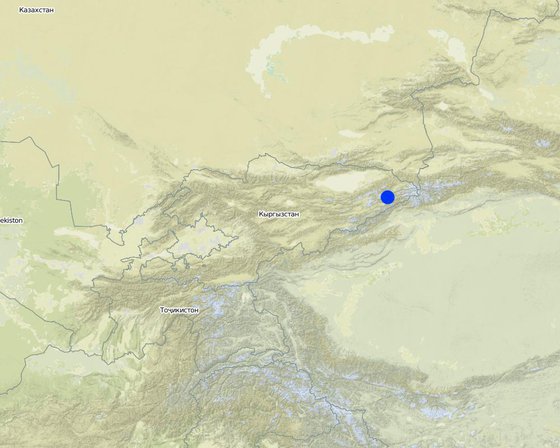
Lugar: Besh-Terek, Chui valley,, Kirguistán
No. de sitios de Tecnología analizados:
Difusión de la Tecnología: distribuida parejamente sobre un área (0.05 km²)
¿En un área de protección permanente?:
Fecha de la implementación:
Tipo de introducción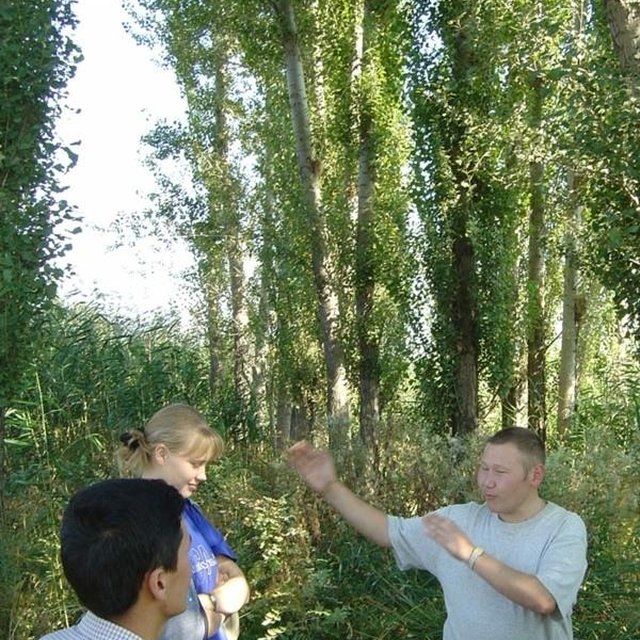
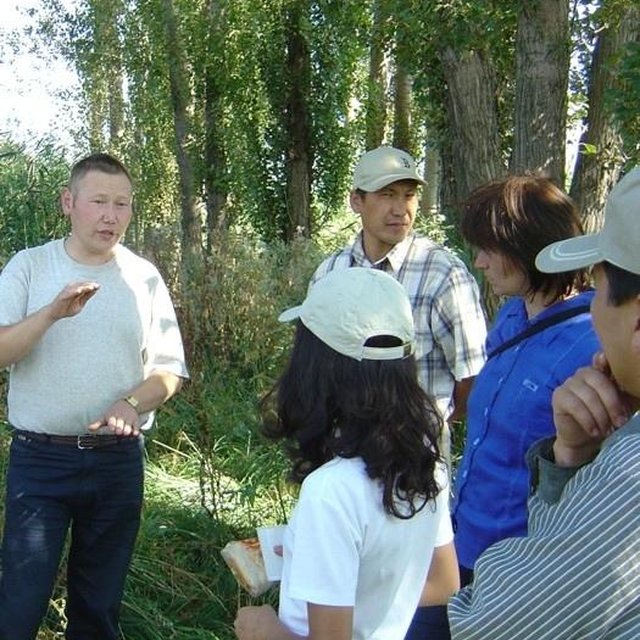






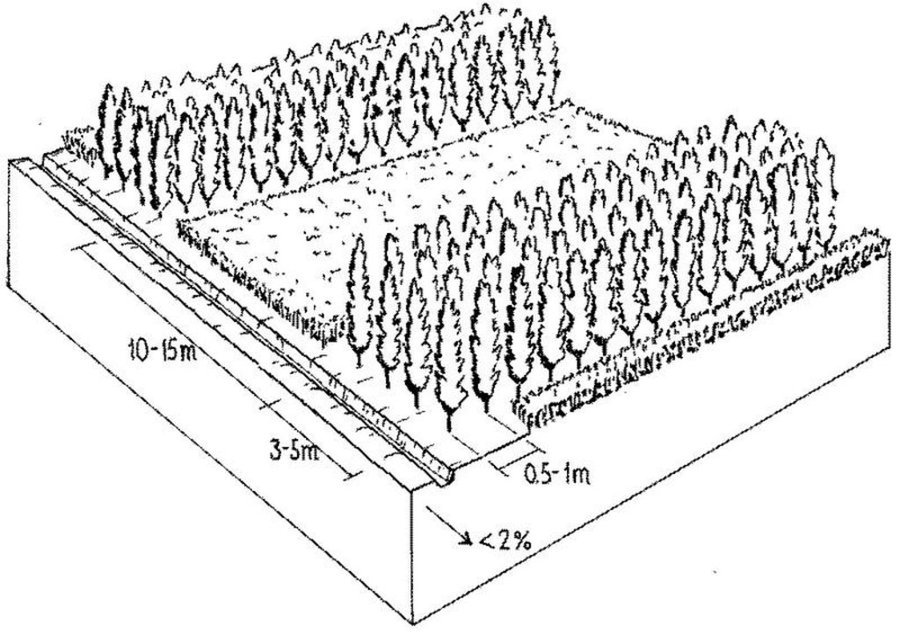
| Especifique insumo | Unidad | Cantidad | Costos por unidad (USD) | Costos totales por insumo (USD) | % de los costos cubiertos por los usuarios de las tierras |
| Mano de obra | |||||
| All the Labour | ha | 1,0 | 350,0 | 350,0 | 100,0 |
| Machine use | ha | 1,0 | 100,0 | 100,0 | 100,0 |
| Animal traction | ha | 1,0 | 5,0 | 5,0 | 100,0 |
| Equipo | |||||
| Tools | ha | 1,0 | 15,0 | 15,0 | |
| Material para plantas | |||||
| Seeds | ha | 1,0 | 20,0 | 20,0 | 1,0 |
| Seedlings | ha | 1,0 | 350,0 | 350,0 | 1,0 |
| Nursery | ha | 1,0 | 80,0 | 80,0 | 1,0 |
| Costos totales para establecer la Tecnología | 920.0 | ||||
| Costos totales para establecer la Tecnología en USD | 920.0 | ||||
| Especifique insumo | Unidad | Cantidad | Costos por unidad (USD) | Costos totales por insumo (USD) | % de los costos cubiertos por los usuarios de las tierras |
| Mano de obra | |||||
| All the labour | ha | 1,0 | 25,0 | 25,0 | 100,0 |
| Equipo | |||||
| Machine use | ha | 1,0 | 5,0 | 5,0 | 100,0 |
| Indique los costos totales para mantenecer la Tecnología | 30.0 | ||||
| Costos totales para mantener la Tecnología en USD | 30.0 | ||||
Lucerne between tree lines
Lucerne between tree lines
Not all the farmers have enough resources for introduction of this technology (equipment,
However, short-term benefit from lucerne as fodder and from firewood through pruning
Due to lucerne: 100–130 kg of N